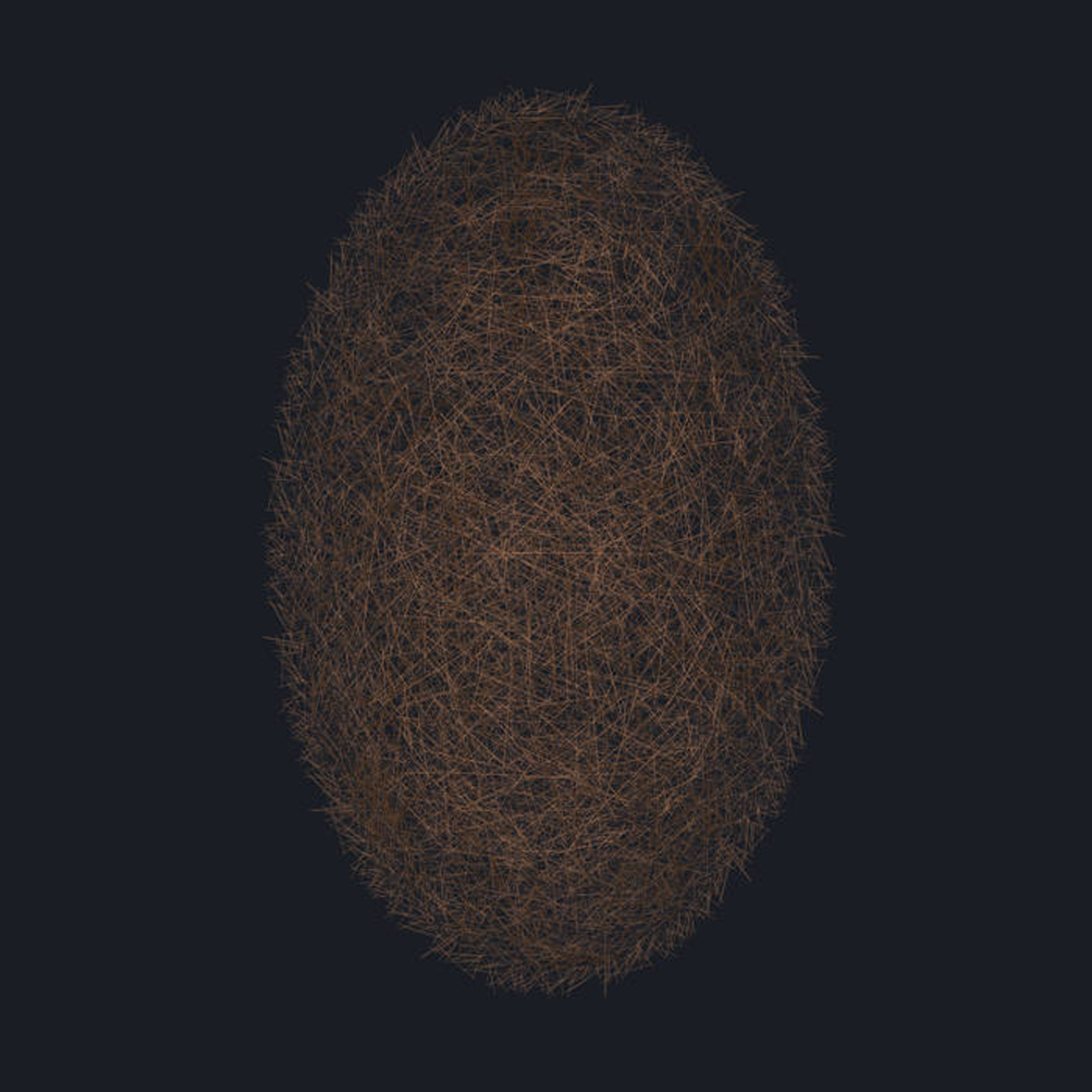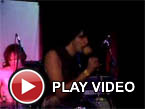Eli Keszler, "Last Signs of Speed"
 Eli Keszler's Cold Pin was easily one of most remarkable and inventive albums of 2011, but he has largely been working under my radar ever since, steadily releasing a flow of live recordings and small-edition vinyl-only collaborations.  Consequently, I was delighted to discover that he was finally ready to unleash another solo opus.  Last Signs of Speed, the inaugural release from Berlin's Empty Editions, is inherently a bit less radical than Cold Pin, as it is sadly not built from a motorized string installation.  It may as well have been built from a motorized percussion installation though, as Keszler's hyper-kinetic free-jazz-inspired drumming is compellingly inhuman and unpredictable.  There is also some music: the album description intriguingly references both Scientist and Iannis Xenakis as key influences, but that dub influence is a damn subtle one.  Instead, Last Signs generally sounds more like Xenakis mixed with a truckload of drumsticks being fitfully poured down a long and winding flight of stairs (in the best way possible).
Eli Keszler's Cold Pin was easily one of most remarkable and inventive albums of 2011, but he has largely been working under my radar ever since, steadily releasing a flow of live recordings and small-edition vinyl-only collaborations.  Consequently, I was delighted to discover that he was finally ready to unleash another solo opus.  Last Signs of Speed, the inaugural release from Berlin's Empty Editions, is inherently a bit less radical than Cold Pin, as it is sadly not built from a motorized string installation.  It may as well have been built from a motorized percussion installation though, as Keszler's hyper-kinetic free-jazz-inspired drumming is compellingly inhuman and unpredictable.  There is also some music: the album description intriguingly references both Scientist and Iannis Xenakis as key influences, but that dub influence is a damn subtle one.  Instead, Last Signs generally sounds more like Xenakis mixed with a truckload of drumsticks being fitfully poured down a long and winding flight of stairs (in the best way possible).
I tend to think of Eli Keszler primarily as an incredibly talented percussionist with a lot of bold and interesting ideas, so I sometimes forget that he is a formidable composer and multi-instrumentalist as well.  In fact, most of these twelve pieces were performed entirely by Keszler himself, which goes a long way towards explaining why it was recorded in three different cities over two years.  Sometimes Keszler had some talented help though, as he is occasionally joined by cellist Leila Bordreuil, percussionist Geoff Mullen, and the String Orchestra of Brooklyn.  Unsurprisingly, the pieces featuring the string orchestra tend to be the most Xenakis-like and often the most vibrant, rich, and fully formed.  That is not always the case though, as Keszler goes it alone in the wonderfully deranged opener "Sudden Laughter, Laughter Without Reason," which sounds like a handful of sickly, out-of-phase sonar pings uncomfortably harmonizing with one another as Keszler unleashes a wildly skittering drum solo.  It is a quite an opening salvo.  As for the orchestra, they make their strongest showing on "Is Stage Director," as they work up quite a churning and cacophonous din of ugly drones as Keszler goes absolutely bananas on his kit.  It is probably the strongest piece on the album just on sheer intensity alone, as Keszler is an unpredictable blur of oddly timed and insanely intricate fills.  Curiously, that unhinged flurry is immediately followed by my other favorite piece ("Holes, Parts Missing"), which eschews percussive pyrotechnics altogether in favor of a quietly lurching and see-sawing rhythm of deep bowed strings.
The rest of the album is a bit more one-dimensionally percussion-focused, but there is indeed a bizarrely manifested and deeply abstract dub influence that arguably surfaces again and again in the form of woozily throbbing bass pulses. "No Iodine, No Breeze" is an especially representative example of that strain, resembling a crawling reggae groove that has been deconstructed into ghostly starkness with some eerily tinkling piano accompaniment.  It is the sort of thing that would definitely drag in the wrong hands, but the wildly plinking and ricocheting percussion handily erases any danger of a lull.  Also, aside from his "conventional" drumming, Keszler additionally creates a lot of unusual textural and rhythmic effects using rocks and gravel on his kit.  It is quite a distinctive sound.  
Most of Last Signs of Speed is devoted to interesting variations upon similarly minimal melodic themes, such as "Breaches Breaches," which sounds like someone tirelessly pumping away at a dying accordion.  The more dramatic departures tend to occur only when other musicians are involved, such as Leila Bordreuil’s nuanced miasma of nightmarish cello drones in "The Next Day, In the Afternoon." Not to be upstaged on his own album, Keszler's percussion for that piece resembles nothing less than several overlapping and fast-paced ping-pong matches.  Later, Keszler teams up with Geoff Mullen for an apparent reprise of "No Iodine, No Breeze" entitled "Willing to be Open," which takes the album’s percussion to strange and frenzied new heights.  Wielding an array of glass, metal, and wood fragments, it sounds like either the work of an insanely busy Rube Goldberg contraption or an amplified and bizarrely rhythmic hail storm.
Naturally, the problem with making an album as brilliant and inventive as Cold Pin is that there will inevitably have to be a follow-up and that it will be nearly impossible to make the same impact a second time, though Keszler did revisit Cold Pin's mechanized installation once more with 2012's Catching Net.  Last Signs of Speed is a different beast altogether though, veering away from installations and sound art into a kinetic tour de force performance behind the drum kit.  As such, it is considerably more technique-driven than conceptually visionary, but Keszler's technique is quite staggering on its own, as he is a skittering, clattering whirlwind.  His talents as a composer are not quite on the same level though, so Speed probably would have been stronger as just a single LP rather than a double.  The pieces are all generally quite good, but a few feel interchangeable with one another and a broodingly monochromatic mood has a tendency to make an album feel longer than it actually is.  Minor grumbling aside, however, Last Signs of Speed is still quite a singular and inspired album.  My opinion may be somewhat suspect though, as I love listening to great drummers flexing their improv skills and could probably happily listen to Keszler play for hours with no music at all.  While I am sure that such a predisposition towards free-jazz drumming helps make Speed a bit more mesmerizing, it is probably not essential, as this is exactly the sort of album that could make someone excited about virtuosic percussionists.
Samples:
 
 
 



